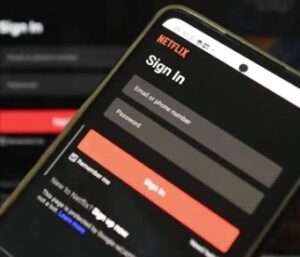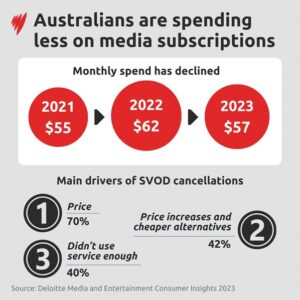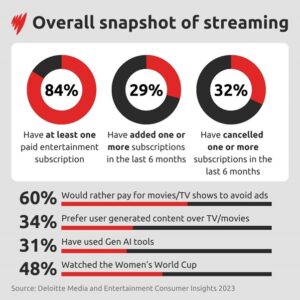The streaming services winning the battle for attention, and the feature Australians want.
SBS web site Source: AAP / Jenny Kane/AP
 It’s not subscription platforms like Netflix that Australians are spending the most time watching, according to a new report, which also revealed they want a feature that would make finding content easier.
It’s not subscription platforms like Netflix that Australians are spending the most time watching, according to a new report, which also revealed they want a feature that would make finding content easier.
Australians are steadily reducing streaming services subscriptions amid cost of living pressures, a new report has found.
Australians are spending more time watching content on free-to-air streaming services than they are on subscription platforms like Netflix, according to a new report.
Consulting firm Deloitte surveyed 2,000 Australians and found they preferred free-to-air video streaming, with people watching an average of 12 hours a week live and on catch-up.
This was followed by 10 hours of subscription video on demand and four hours a week on video platforms such as YouTube and Twitch.
The research also showed a trend towards short from social media content, with 60 per cent of Australians spending more than an hour a day on social media and 42 per cent of people watching more user-generated content than videos on paid platforms.
The average Australian spends in one week:
- 27 hours streaming video
- Nine hours streaming audio and music
- 5 hours scrolling social media
- Four hours playing video games
- Two hours reading newspapers and magazines.
Some 73 per cent of respondents indicated they would like one place to search and discover content across all their services.

The amount people spend on subscription video on demand (SVOD) has dropped over the past year. Source: SBS News
Cutting back on entertainment spending
Australians are also spending less on digital media on the whole and frequently changing and cancelling their paid subscription services as cost of living pressures bite, according to the report.
It found the average monthly household spend on digital entertainment services has fallen 8 per cent to $57.
In 2022 people were spending an average of $62 a month on subscriptions, while in 2021 the average was $55.
This is despite the cost of some subscriptions increasing.
But while we’re spending less, we also hold marginally more subscriptions on average than last year.
The average Australian pays for 3.2 entertainment subscriptions, up from 3.1 in 2022.
Around 42 per cent of people have cancelled a subscription in the last three months, while 29 per cent have added one.
The group that cancelled the most was Gen Z, with 54 per cent of Gen Z-ers ditching a streaming service in the past three months.
This is likely explained by the transition to ad-supported platforms, cheaper subscription tiers or continued account sharing, the report authors wrote.

More than a third of households currently exceed their target monthly entertainment budget, meaning more account cancellations are likely, the report authors wrote.
The main reason people cancelled subscriptions was due to the price, with 70 per cent citing this factor, while 42 per cent said they were cancelling to seek cheaper alternatives.
Forty per cent of respondents to a multiple choice question said they didn’t use the service enough.
There was an increase in people signing up for advertisement-supported streaming services, which are cheaper than ad-free platforms.
People are chopping and changing their subscriptions frequently, with 51 per cent of Australians changing their streaming video services once a year.
What is the generational divide in streaming services?
The difference in Gen Z’s (defined by the report as people aged 16-24) media diet compared to those aged 75 and over is stark.
Gen Z-ers are listening to much more audio on average – 15 hours a week compared to six hours a week for those aged 75 and over.
The average monthly household spend on digital entertainment services is likely to fall further, with more than a third of households currently exceeding their target monthly entertainment budget, according to Deloitte. Source: AAP / Neil Hall/EPA
But Gen Z-ers are only spending one hour reading newspapers and magazines compared to those aged 75 and older, who spent four hours doing so, according to the report.
Gen Z also spends nearly 13 hours a week on social media, while those aged 75 and older spend just four hours using it.




